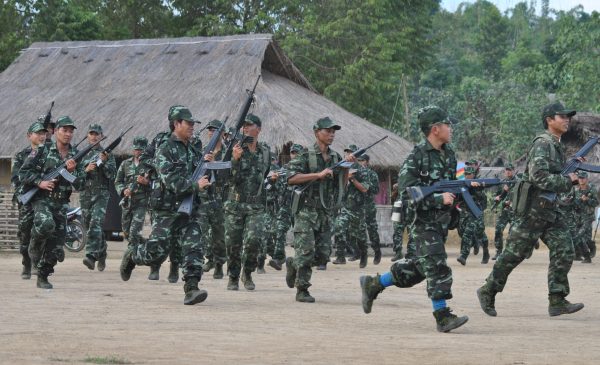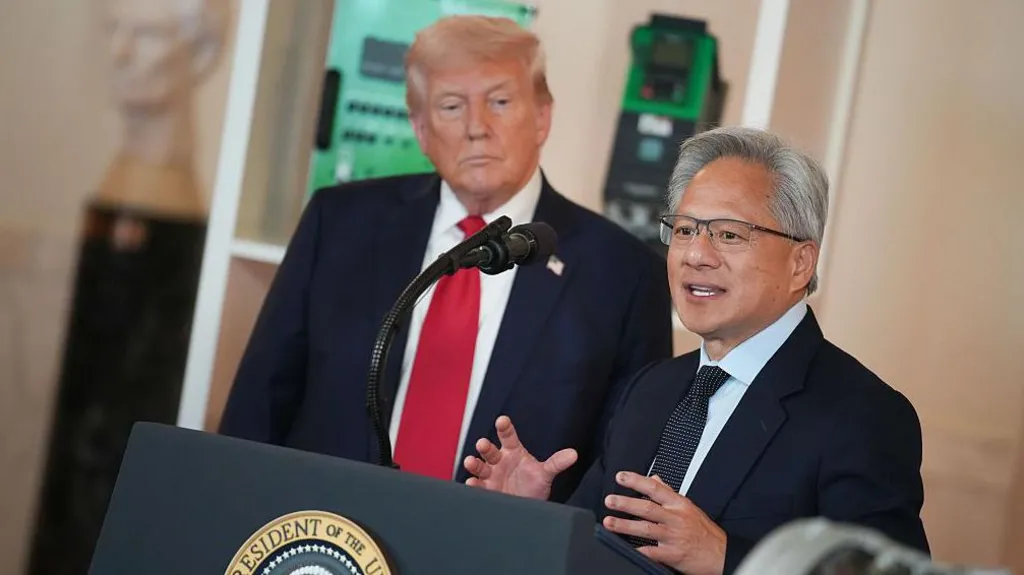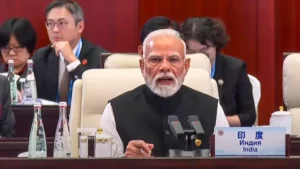Indian Rebel Outfits Regrouping in Myanmar Again
Separatist rebel outfits from India’s frontier region of the northeast are regrouping in Myanmar more than two years after their camps and training facilities were dismantled in an operation lasting several months.
According to former functionaries associated with the Yung Aung faction of the National Socialist Council of Nagaland-Khaplang (NSCN-K/YA), at least four militant groups from India’s border states of Assam and Manipur, including the People’s Liberation Army (PLA), the Kangla Yawol Kanna Lup (KYKL) and the People’s Republican Party of Kangleipak (PREPAK), have redeployed their fighters in Myanmar’s Naga-inhabited region.
They have been spotted at a location east of Hoyat village in Myanmar, which is inhabited by Konyak Nagas, the former NSCN-K/YA functionaries said.
A senior Indian government official in New Delhi confirmed to The Diplomat that northeastern rebel outfits were indeed regrouping in Myanmar. The NSCN-K/YA was also making efforts to erect a new general headquarters in Myanmar in the earlier pattern, where camps of other outfits were located within a radius of 6-10 kilometers, the official said.
Diplomat Brief Weekly Newsletter N Get briefed on the story of the week, and developing stories to watch across the Asia-Pacific. Get the Newsletter
Actively linked to all these groups is the independent faction of the United Liberation Front of Asom (ULFA-I), an insurgent group in India’s border state of Assam, which had declared a unilateral ceasefire with the government. The ceasefire, which the outfit said was due to the pandemic, came on the heels of increasing surrenders from the camps in Myanmar, including a few functionaries who had spent several decades in the organization.
Enjoying this article? Click here to subscribe for full access. Just $5 a month.
But alongside the ceasefire with the government, ULFA-I has been recruiting new cadres to fill up the vacant ranks, which was telecast by a few local TV news channels in Assam. In November, some women also crossed the border to join the group, among whom were two well-known kickboxers.
The regrouping of separatist militants from India’s Northeast in Myanmar is happening more than two years after most of their camps were eradicated by the Tatmadaw in an exercise codenamed Operation Sunrise. The facilities at Taga in Myanmar’s Hukwang Valley and NSCN-K’s Second Battalion and General Headquarters in the Naga-inhabited region, which also housed other rebel groups, were shelled and destroyed in the operation.
The number of rebels killed in Operation Sunrise remains a matter of speculation. What is certain is that the majority of the militants belonging to the Manipuri outfits headed to camps in the southern region of Myanmar’s Sagaing Division.
Another group, the National Democratic Front of Bodoland (NDFB), surrendered and inked an agreement with the Indian government while those from ULFA-I headed north to their camps in the Pangmi Naga area, which were not destroyed during the operation.
The situation has changed drastically since the Myanmar military coup in February 2021 and the subsequent armed conflict in the country.
In a replay of events somewhat similar to the early 1990s in Myanmar, the Tatmadaw has normalized its ties with many armed groups in what appears to be a shrewd effort at marshaling its resources for effectively combating the armed uprisings in some hotspots such as Kachin and Karen states.
Among the friendly groups are a few outfits from Manipur, whom the Tatmadaw are reportedly deploying against the People’s Defense Forces (PDFs) in Chin State and Sagaing Division.
It is evident, therefore, that the Myanmar military has reached a new understanding with these groups, which explains the increased presence of rebel cadres in Myanmar’s Naga region.
It is highly possible that these militant groups will make efforts to establish new linkages and supply routes to ensure the sustainability of their campaign in India’s Northeast.
Observers in Assam feel that ULFA-I could reach out to marginalized communities in the state to widen its ambit of operations. There were some indications in this regard in the latest issue of ULFA-I’s mouthpiece, “Swadhinata“ (Independence), which was mailed to media houses in December last year.
Enjoying this article? Click here to subscribe for full access. Just $5 a month.
The development has triggered concerns in New Delhi as it could mean a renewed phase of insurgent activity in the region.
On December 22-23, India’s Foreign Secretary Harsh Vardhan Shringla visited Myanmar. The visit, which was the first by an Indian official to Myanmar since the military coup in February last year, saw Shringla raising India’s security concerns in the wake of a recent militant attack in India’s Northeast.
On November 14, militants belonging to the proscribed People’s Liberation Army ambushed and killed six personnel of the Assam Rifles, including a commanding officer, in Manipur bordering Myanmar. Within hours of the ambush, the killers scampered to their camps across the border in Myanmar, beyond the range of the Indian security forces.
In Myanmar, India’s foreign secretary emphasized the need to put an end to violence and maintain peace and stability in the border region. Both sides reiterated their commitment to ensure that their respective territories would not be allowed to be used for any activities inimical to the other.
In previous meetings as well over the past many years, the Tatmadaw had assured as much to India but precious little had been done about the rebel camps or the smuggling of contraband items such as drugs, gold, areca nuts, and fake currency.
Operation Sunrise was an exception. It was launched within six months of Myanmar army chief Senior General Min Aung Hlaing’s visit to India in July 2018, when an agreement on a joint operation against the militant outfits
On December 17, Myanmar authorities handed over five PLA functionaries to Indian authorities. Speculation was rife in some circles that the five militants were involved in the ambush in Manipur in November, but it turned out that the rebels had been arrested in August on other charges and imprisoned in Mandalay before being repatriated to India.










